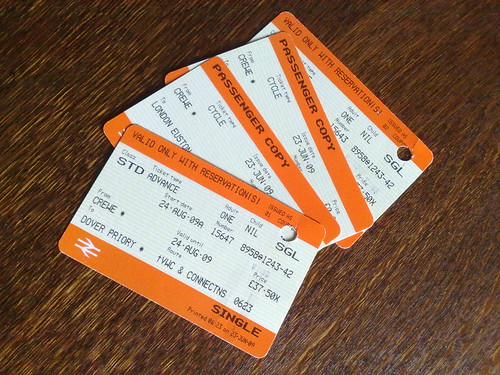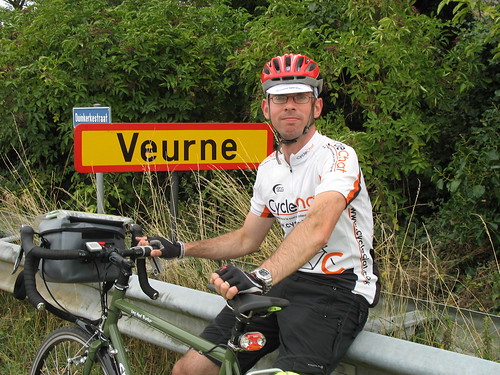
Mrs. Monkey at the outskirts of Veurne
During the night, the slight disadvantage of a hotel on the road around Veurne became apparent. In Belgium, it seems, people discuss parking their BMW X5s in tiny spaces in VERY loud voices at midnight. Garbage collection is also done by VERY noisy trucks during the wee small hours of the morning. Closing the window largely resolved the noise problem though.
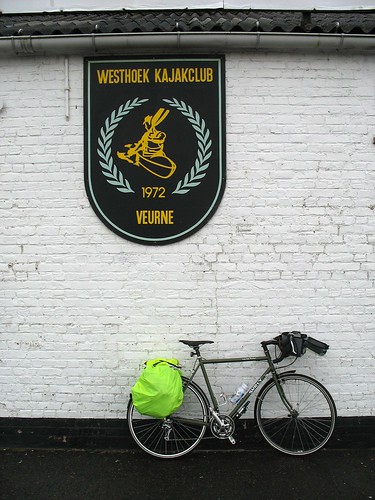
Westhoek Kajakclub, where we joined the canal side route out of Veurne
Our plan for today was to strike out towards Brugge, using the route along the Canals (Kanal Veurne Nieuwpoort, Kanal Passendale-Nieuwpoort, Kanal Gent-Brugge-Oostende). Navigation from this point was straightforward, using the excellent system of "knoppunkten". Rather signpost numbered routes, a la the NCN in Britain, the Fietsroute system in Belgium employs a series of numbered points. Using your map, you decide which points to follow to your destination, and then just follow the signs between them. The signs are intelligently placed and easily interpreted. It's a system that works superbly, and both Mrs. Monkey and I became big fans of it during our tour.
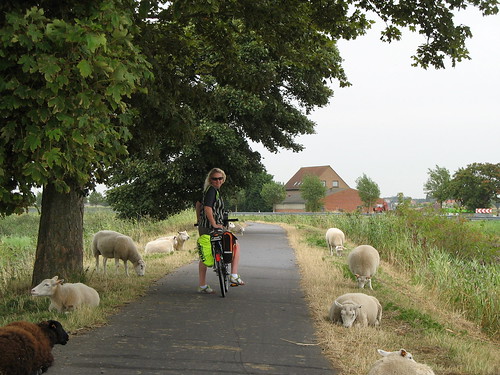
Traffic on the Fietsroute
As you'll see from the pictures, the day began a little overcast, and we did get a shower around midday that was heavy enough to require 5 minutes or so sheltering under a tree. Along the way out of Veurne, we encountered these sheep, and this unusual path side tableau;

Flat Eric has a Deadline to Meet
We also saw a pedal pub, although this was, unfortunately, on the other side of the canal to us, we couldn't take up the occupants' enthusiastic offers of drinks! Another sight we saw for the first time along this part of the route was the large, guided rides that seem to be an everyday occurrence. I'd estimate that about 20-30 people, mostly seeming to be in their 60s, led by three or four people in Hi-Viz tabards were headed towards Veurne along the fietsroute. We were to see these groups pretty much every day, along with training racing cyclists, and commuters (the latter more common the closer we were to towns).
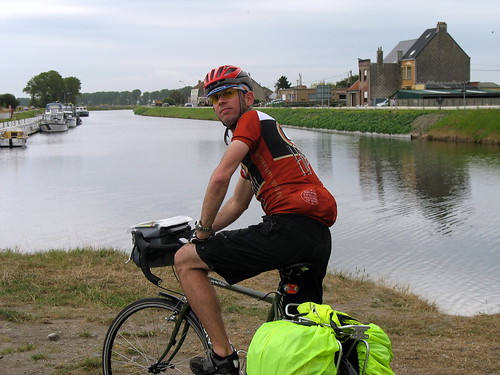
Me, where the route turns towards Brugge
After turning towards Snaskerke and Oudenburg, the day began to brighten, and we stopped just over one of the bridges on the canal at the "Bistro Nieuwweg" ("New Way Bistro"). I don't think we'd have spotted this place had we not been cycling (it's seriously out of the way).
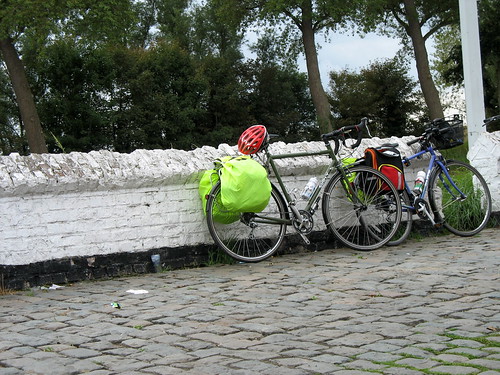
Our Bikes at the Bistro...

And Our Bikes in context.
As you can see from the pictures, most of the other patrons had arrived by bike too - generally (and the folks at Amsterdamize/Copenhagenize would be proud) on city bikes, helmetless, in "normal" clothes. Here, the bikes outnumbered the parked cars by around three to one. Had another guided group stopped (one passed as we were enjoying a Kriek and a Hoegaarden) that would have risen to ten to one. You can also see our first taste of Belgian pavé here. We were to become more familiar with this on day three...
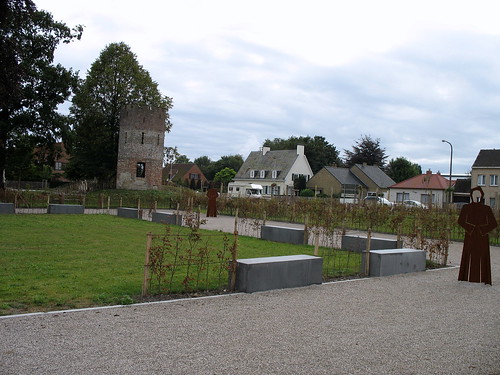
We did make a stop in Oudenburg, but found that a lot of places had already closed. We stopped at a quite swanky restaurant, and felt so out of place among the suited clientele that we left having only had a drink. Eventually, we happened across a small bakery, and I used my (frankly limited and dreadful) Dutch to order us a couple of sandwiches (which were delicious, although I couldn't figure out what was in them) and pastries to sustain us for the rest of the journey.
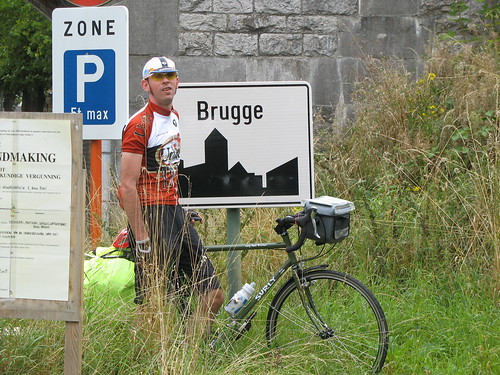
Arrival at Brugge
If I look somewhat uncomfortable in the picture above, it may be because I'm trying not to stand in the trash surrounding the foot of this sign. Once in Brugge, we used my Nokia N82's GPS navigation system to find where we were staying, the B&B Marie Rose Debruyne, on Langeraamstraat. This is a really well situated B&B, handy for the centre of Bruges, and run by lovely, friendly people. (As we left, they were 'phoning the train station at Zeebrugge to find out for another guest whether left luggage lockers were available). The house was designed by the proprietor, and is unusual architecturally, but comfortable and friendly (super breakfast too). One word of warning is that the numbering on this road is slightly confusing - you may need to use your (frankly limited, and dreadful) Dutch to get directions.
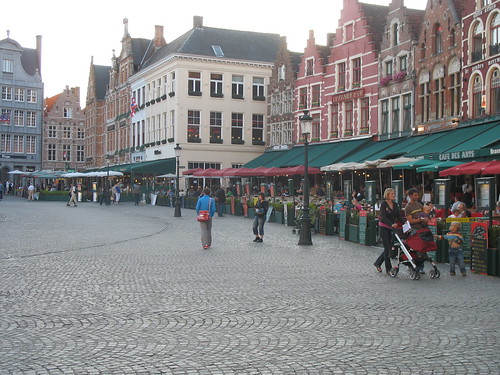
Brugge Grote Markt.
Brugge itself is wonderful, and bikes are EVERYWHERE. The "Uitgezonderd" exceptions for bicycles and mopeds to the one way system are ubiquitous, and the world has not stopped turning, nor does there seem to be the daily carnage that opponents to such systems seem to predict. As you can probably see from the pictures, the evening we were there was lovely, sunny and warm.
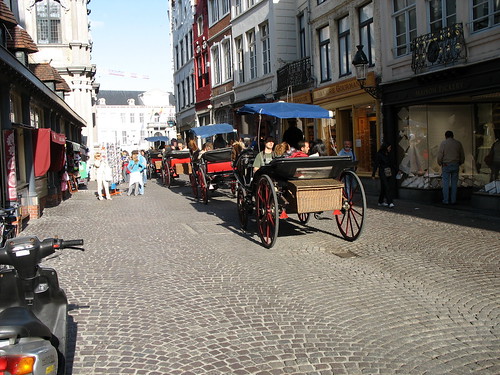
The ubiquitous Horse Drawn Carriages...
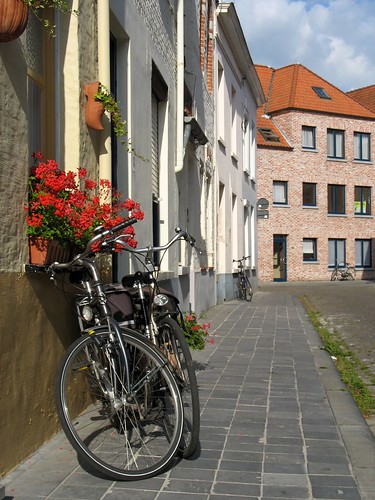
...and even more ubiquitous bikes.
Dinner on this night was in a "Tante Marie" restaurant just off the Grote Markt. More pasta for Mrs Monkey, although I tried a Vlamse Karbonade (Flemish Stew) which was very tasty indeed.
Miles Covered: 34, at an average speed of 10.18mph
